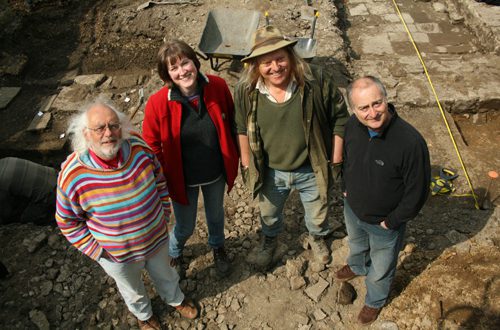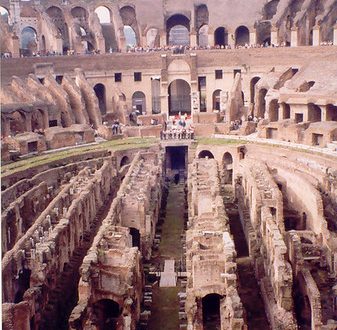At the opening of the new Neues Museum in Berlin this week, it seems that one question is on everybody’s mind – will Germany return the bust of Nefertiti to Egypt? Dr Hawass of Egypt’s Supreme Council of Antiquities may be feeling a little more confident after obtaining an agreement from the Musee du Louvre for the return of the fragments from Tetiki’s tomb recently.
There’s not much chance that Egypt would have received that reassuring phone call from President Sarkozy had the Louvre’s access to excavations at Saqqara not been threatened. These tough tactics have worked in this case.
But have they set a precedent for future discussions on other controversial artefacts housed in western European museums? Are institutions such as the British Museum going to consider returning the Rosetta Stone or the Elgin Marbles unless they stand to lose out themselves?
The Bust of Nefertiti is on display in Berlin and has been more or less ever since it was discovered in Egypt in 1913. In August this year, Dr Hawass began to stoke the fire around the discussion of this artefact’s repatriation, by saying that he would reveal some incontrovertible arguments about the legal ownership of the bust. This information was to be written in a letter to the Neues Museum – opened this week – which now houses the bust.
So the argument is now heating up nicely but what are the chances that the German museum’s curators will agree to Hawass’s demand? There are strong arguments on either side but here are some of the most often heard reasons why the German authorities should not give Nefertiti back.
1. Nefertiti cannot be moved! Well, only a little bit.
The number one reason is that the bust, made of a core of sculpted limestone and then finished with a layer of render that gives her that super-smooth look, is actually too fragile to go anywhere. The curator of the Altes Museum, Dietrich Wildung, has been quoted as saying: “It is an enormous risk to let her travel.” The museum is backed up by German Culture Minister Bernd Neumann, who has been quoted as saying: “We could never be certain that she would arrive in good health. They claim that the limestone bust with its plaster layers is very delicate and could be damaged by vibrations or changes in temperature. This argument has been slightly disproved by the fact that Nefertiti has been moved from the Altes Museum to the newly-refurbished Neues Museum. Admittedly the two museums are very close but the fact that she was moved would suggest that due care could also be taken to move her all the way to Cairo.
2. The bust belongs to us! Or does it?
The German authorities claim that they legally own the Bust of Nefertiti. However, the story of how it got to Germany doesn’t really point to an honest transaction. The German Egyptologist Ludwig Borchardt found the bust during excavations at El Armana between 1911-14. Apparently he then doctored a photo of the bust to make it appear in far worse condition that it actually was and also claimed it was made of plaster rather than plaster-rendered limestone. Whether Borchardt practised some deception, or whether the authorities at the time Egypt was occupied by Britain – were lax in allowing the bust to leave the country remains unclear. There is no doubt in Dr Hawass’s mind though he refers to the bust on his website as one of the world’s illegally taken treasures. The legal ownership of the statue is something that will have to be thrashed out between Dr Hawass and the curators of the Neues Museum very soon. But who was it that that possession is nine-tenths of the law?
3. The queen is a fake!
This argument seemed to distract the main debate for a while. The Swiss art historian Henri Stierlin claimed this year that the famous bust on display in Berlin is actually a copy made for Ludwig Borchardt almost 100 years ago. His theory hasn’t gained much credibility among the world of canny Egyptologists. As Keith Payne points out in his blogpost on the subject, the authenticity of the bust is about the only thing that the Egyptian and German authorities can agree upon.
4. Will she be in safe hands?
Dr Hawass would like to see it housed in the new Grand Egyptian Museum at Giza, which is due to open in 2013. If there is any truth in the argument that an Egyptian museum might not have the resources to house such a valuable artefact, I imagine this will have to be revisited once the museum is actually open. Meanwhile, the German authorities have the strong argument that their museums on Berlin’s Museum Island are some of the most modern and fully-resourced places for ancient artefacts in the world.
5. Egypt is full of antiquities surely?
I imagine that certain parts of Egypt are a bit like Rome: there is such a wealth of ancient structures and artefacts that the authorities are very hard pushed to find the money and the space to do them all justice. Many of Rome’s museums show only the very best of their collection, while many objects, which could be of interest to foreign museums, are left in storage. The same may well be true of the museums in Cairo. In the case of Nefertiti, the bust is a huge crowd-puller for Berlin’s Neues Museum (and the Altes Museum before that). She draws up to half a million visitors a year. Would the unique beauty of the bust be lost among the many remarkable Egyptian objects that are on display in Cairo?
6. Museums educate the general public
Not everyone can afford to visit ancient sites such as the pyramids of Giza or the site of El Amarna. By displaying objects from Egypt in many different museums around the world, you are providing access for millions of people to fascinating artefacts from far-flung cultures. The Rosetta Stone in the British Museum or a bust of a Roman emperor at St Petersburg’s Hermitage could inspire someone who might have no other possibility of learning about Egyptology or ancient Rome.
7. Hedge your bets
Many people also argue that it is better to disburse artefacts around the world so that if there were to be some kind of disaster or war, for example in Egypt, then all the Egyptian artefacts would not be damaged or destroyed all in one go. This is the basic ‘don’t keep all your eggs in one basket’ idea and coupled with the benefits of education and bringing objects to a wider audience, I think it’s a convincing argument although it’s also a logic that would argue against keeping an excessive number of precious objects in super-museums such as the British Museum, the Louvre and the Hermitage.
8. Talking about fakes…
While we’re on the subject of fakes, one very reasonable solution to all this repatriation palaver could be to make very convincing copies of the controversial objects in question. This is the temporary solution that allows the full Elgin Marbles frieze to be displayed at the New Acropolis Museum. Of course many would then argue that the Neues Museum can keep its fake bust, but send the real thing to Giza.
9. Money talks
Whether the bust of Nefertiti should ethically or legally be taken back to Egypt is an argument that may go on for quite a while longer. But I don’t think I’m being too cynical in saying that, in the world of modern archaeology, museum curatorship and research, money and numbers come top of most agendas. The Altes Museum was pulling in 500,000 visitors each year with Nefertiti as their most important exhibit. If the Neues Museum lost her, how many visitors would they lose and what would be the financial impact? It could also be argued that the bust on display in Berlin is a very good advert for Egyptian tourism could they also lose out financially?
10. The power of Nefertiti
Hitler once said: I will never relinquish the head of the queen. Apparently the Fuhrer was very much attached to Nefertiti and had plans to build a spectacular Egyptian museum in Berlin, in which she would be the star attraction. The dictator’s only relevance to the modern question of where Nefertiti should reside, is that his attachment typifies the power that the 3,300-year old statue has always had on those who ‘own’ her. It seems that in this tug-of-war over the queen’s head, someone is bound to get hurt. Dr Hawass is pretty confident it’s not going to be him. But I’m not so sure.




